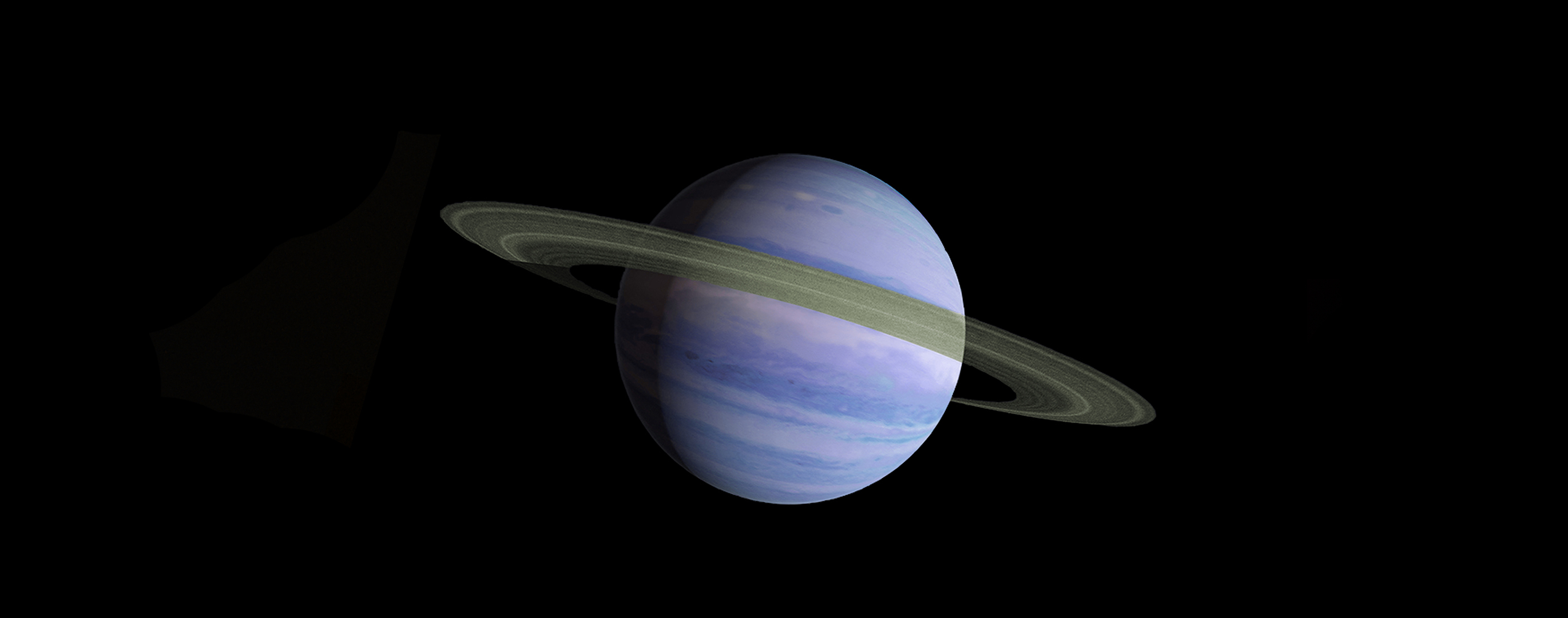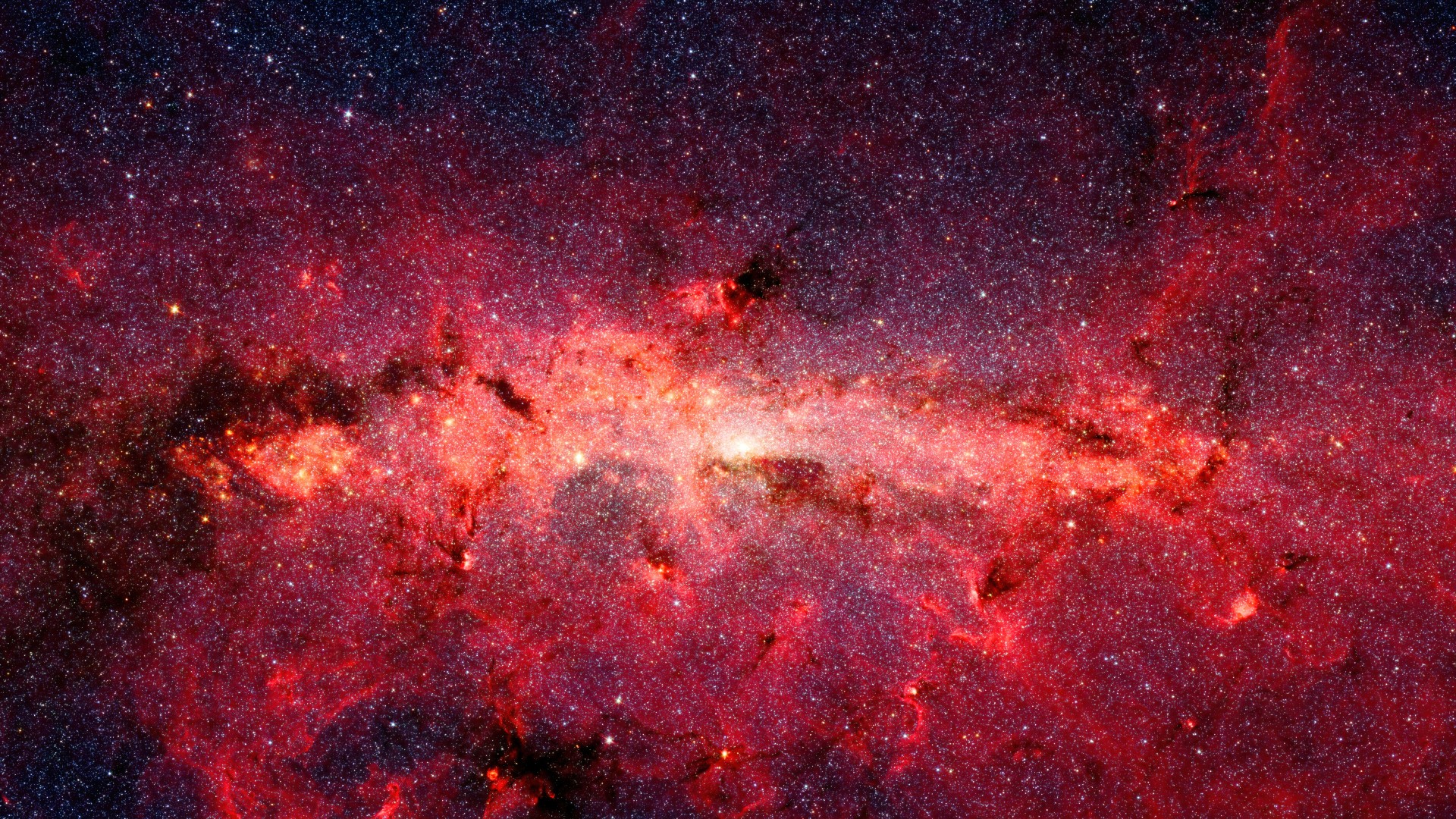'Sub-Saturns' May Force Scientists to Revise Idea of How Planets Form

Astronomers know our solar system better than any other, but they're still learning new ways in which it doesn't seem to be particularly normal.
One such quirk, in patterns of planetary sizes, was the subject of a news conference held yesterday (Jan. 8) at the annual meeting of the American Astronomical Society. The results could prompt scientists to revise a leading theory of how planets form.
And that, in turn, could have serious implications for the search for life beyond our solar system. "Planet formation theory is pretty important even if you are only interested in habitable planets because it's not just enough to have a planet in the habitable zone, you have to have chemicals that are consistent with life and a history that's consistent with the development of life," David Bennett, an astronomer at the University of Maryland, said in a news conference held during the meeting. "The better we can understand planet formation, the better we are able to predict which planets might be habitable." [7 Ways to Discover Alien Planets]
Right now, the leading theory of planetary formation, called the "core accretion model," is tailored to explain what we see in our solar system — the only one we knew much of anything about when the model was developed. But the more planets we identify in other solar systems, the more we find they don't match the patterns of mass and orbital distances found here on our own.
Take, for example, the staggering size gap between Neptune and Saturn. Neptune is about 17 times the mass of Earth, whereas Saturn is far bigger at 95 times Earth's mass, according to NASA. In between, nothing. The core accretion model explains that gap with a mechanism called "runaway gas accretion."
Here's how the core accretion model explains the birth of a gas giant. First, hunks of rock and ice clump together, building up what becomes a core — perhaps about 10 times Earth's mass. That core has enough gravity to slowly grab onto hydrogen and helium gas.
But under the runaway gas accretion model, once a developing planet has slowly pulled together another 10 Earth masses or so of gas, something changes. The process becomes overpowering, with the planet rapidly gobbling in whatever other gas is nearby until that source runs out.
Breaking space news, the latest updates on rocket launches, skywatching events and more!
If this idea is correct, it explains the gulf between Neptune and Saturn — Uranus and Neptune never hit the crucial size to trigger runaway gas accretion, whereas Saturn and Jupiter did and bulked up to huge masses.
There's just one problem: Astronomers have realized that other solar systems do host plenty of planets with sizes between these extremes, nicknamed sub-Saturns. A paper published in December in The Astrophysical Journal Letters and presented at the meeting compared 30 different planets identified by a specific technique with what scientists would expect to see based on the core accretion model. In that survey, they found the model doesn't match very well with reality.
That gives our solar system a new weird quirk — its missing sub-Saturns. "The lack of such planets in our own solar system is more likely to be due to random chance or an accident," Bennett said.
And the lack of such planets overall is because they're really hard to detect. There's only one technique powerful enough to identify planets that orbit beyond what astronomers call the "snow line," where loose material in an early solar system is far enough from its sun that light materials like water can freeze — the sort of neighborhood you need to search to find sub-Saturns.
That technique, called gravitational microlensing, relies on a trick of the universe. When a very massive object passes precisely between an observer and a light source, its gravity tugs the light off-course, making it appear magnified. If that massive object is a solar system, scientists can spot planets by looking for small anomalies in the observations. [Exoplanet Discovery: The 7 Earth-Sized Planets of TRAPPIST-1 in Pictures]
But usually, they don't know much about the planet — only a sense of how many times smaller it is than its sun. That's not the case for a sub-Saturn planet studied by many of the same researchers behind the survey paper. In that case, they were able to pin down the mass of just such a planet by relying on a bit of patience, sharing their results in a second paper published in December in The Astronomical Journal.
The team revisited a planet that had been identified by gravitational microlensing in 2012. Since those first observations, the celestial geometry has scrambled, taking the planetary system and the light source it was magnifying out of alignment. The team was able to make an incredibly precise measurement of just how much the objects shifted over the years since the planetary identification, which they could then use to calculate an actual mass for the planet, called OGLE-2012-BLG-0950.
That mass is in prime sub-Saturn territory, at about 39 Earth masses. That measurement firmly points to a planet that can't look like anything in our solar system. It's also a feat in and of itself, the equivalent of pinpointing a dime from nearly 70 miles (110 kilometers) away. "That is a really difficult thing to do," lead author Aparna Bhattacharya, an astronomer at NASA's Goddard Space Flight Center, said during the news conference.
But it isn't destined to be a one-time accomplishment, thanks to the planned Wide Field Infrared Survey Telescope, or WFIRST, which NASA is due to launch in the mid-2020s. That instrument will be able to use the same microlensing technique to identify and measure planets — and it will do so for hundreds of such distant worlds. Those measurements, in turn, may well reveal other weak spots in our understanding of how planets form.
Email Meghan Bartels at mbartels@space.com or follow her @meghanbartels. Follow us @Spacedotcom and Facebook. Original article on Space.com.
Join our Space Forums to keep talking space on the latest missions, night sky and more! And if you have a news tip, correction or comment, let us know at: community@space.com.

Meghan is a senior writer at Space.com and has more than five years' experience as a science journalist based in New York City. She joined Space.com in July 2018, with previous writing published in outlets including Newsweek and Audubon. Meghan earned an MA in science journalism from New York University and a BA in classics from Georgetown University, and in her free time she enjoys reading and visiting museums. Follow her on Twitter at @meghanbartels.
